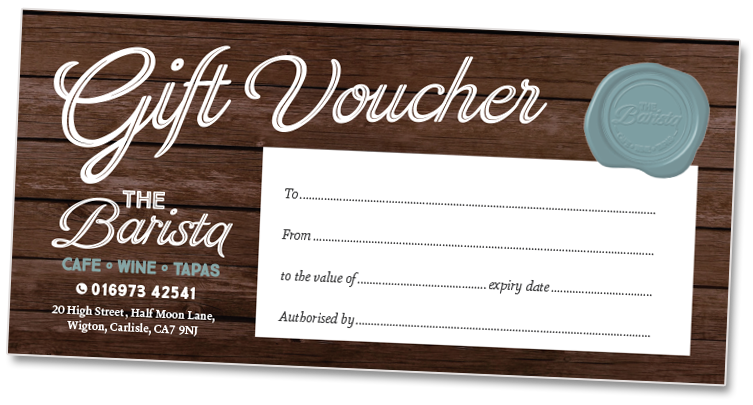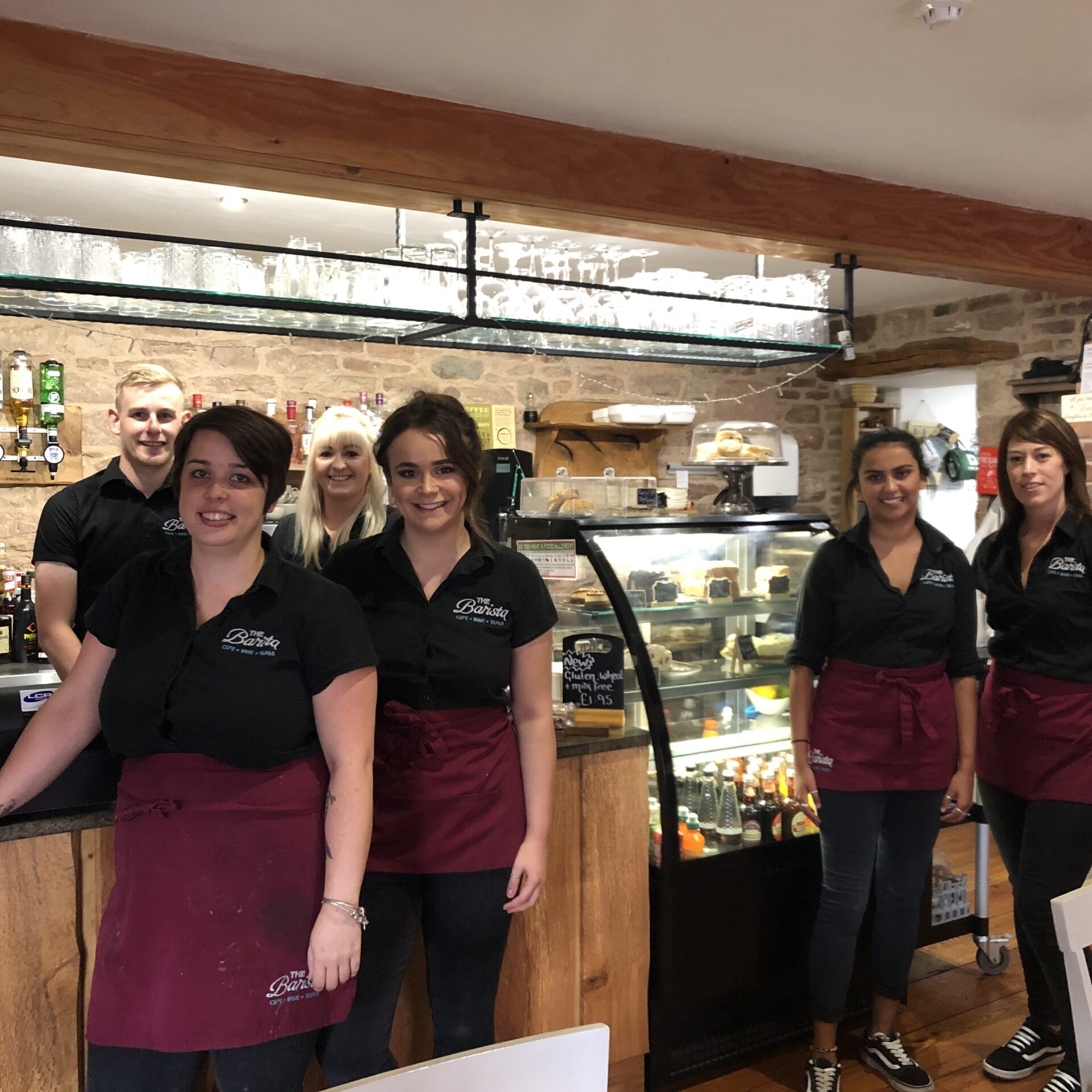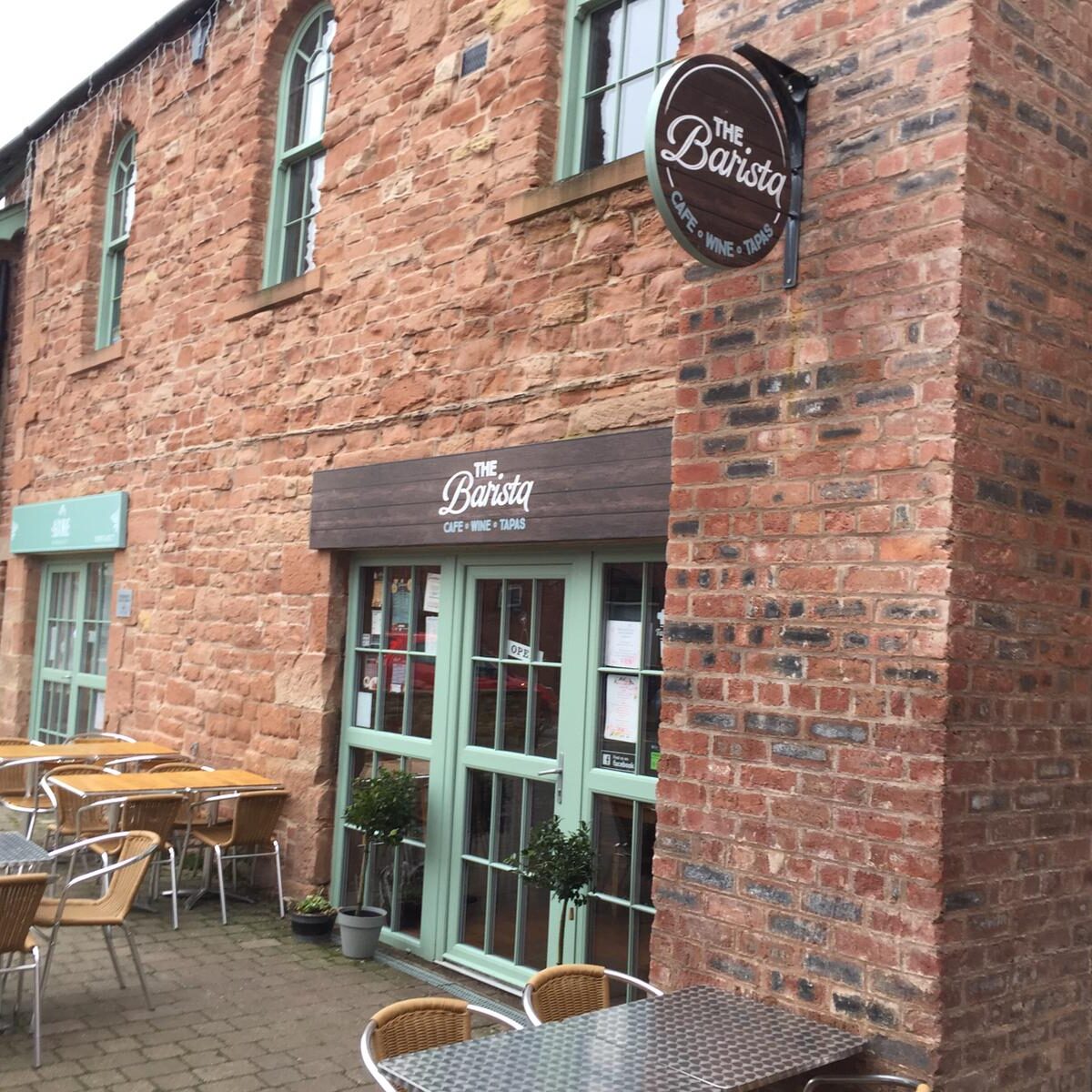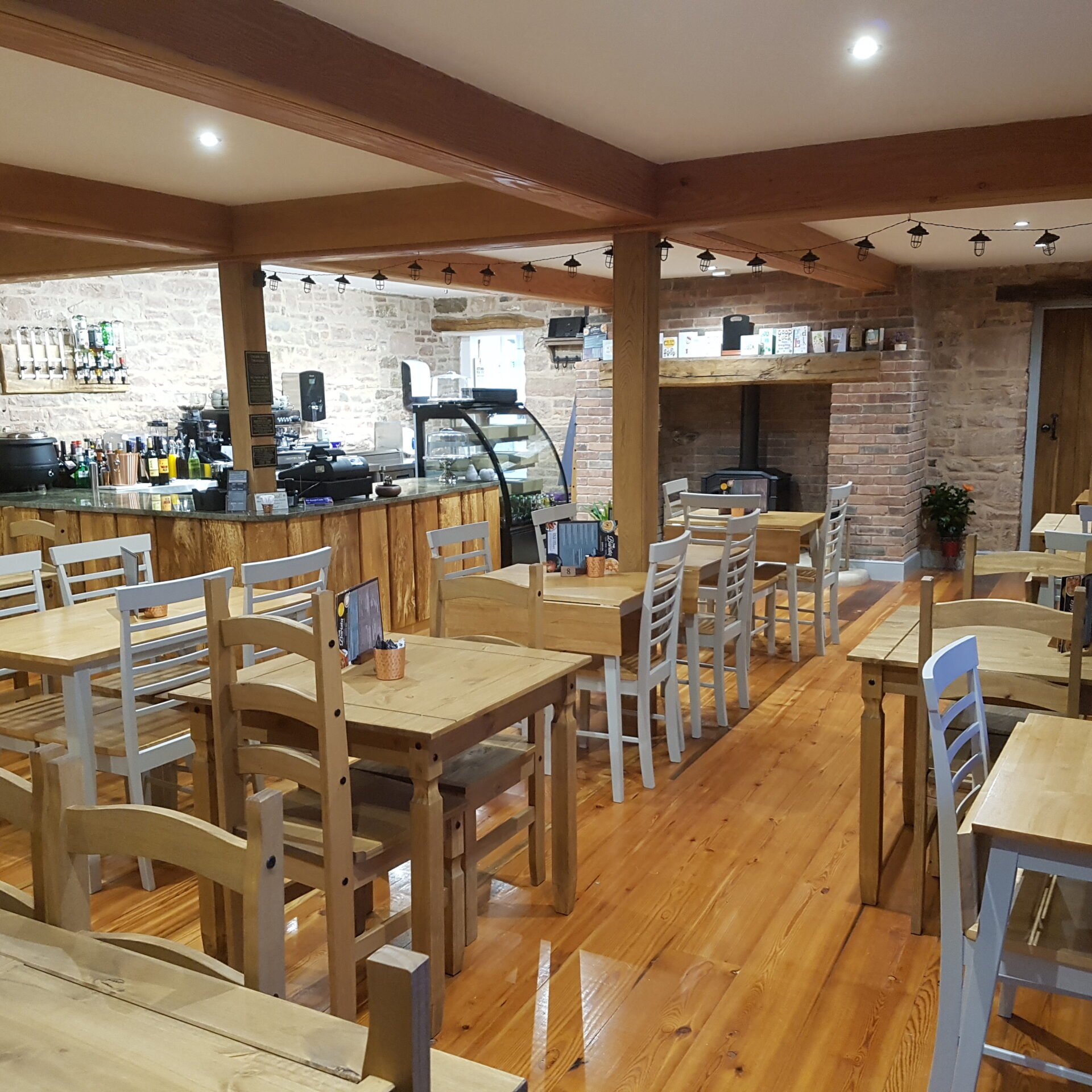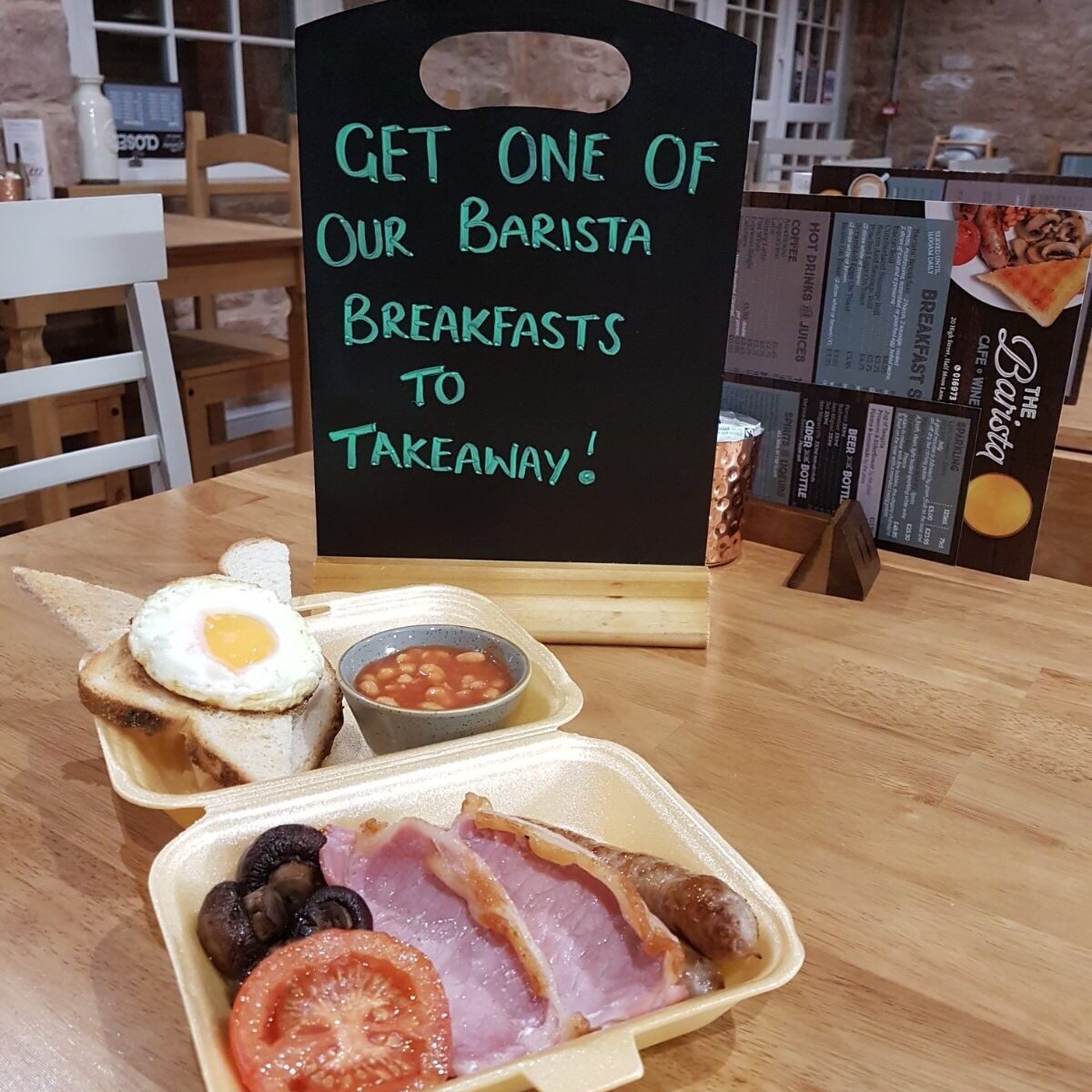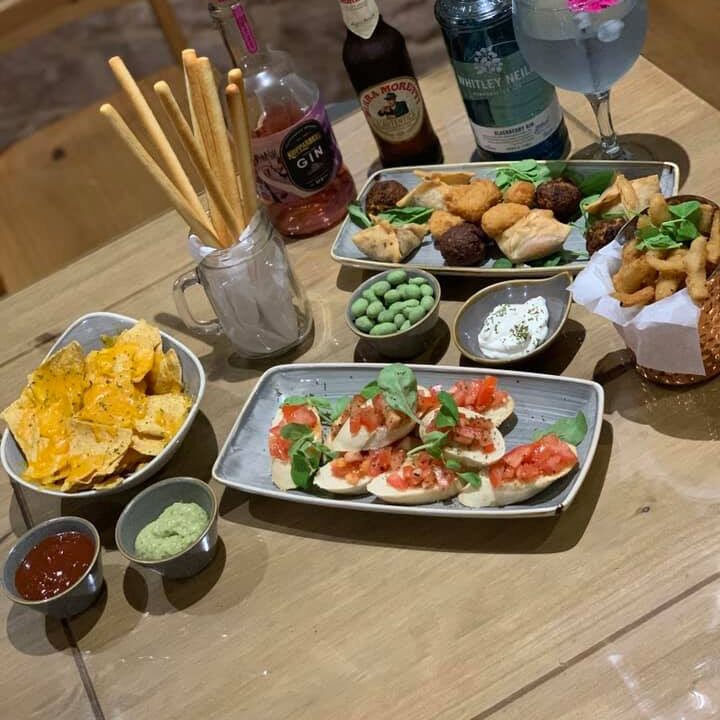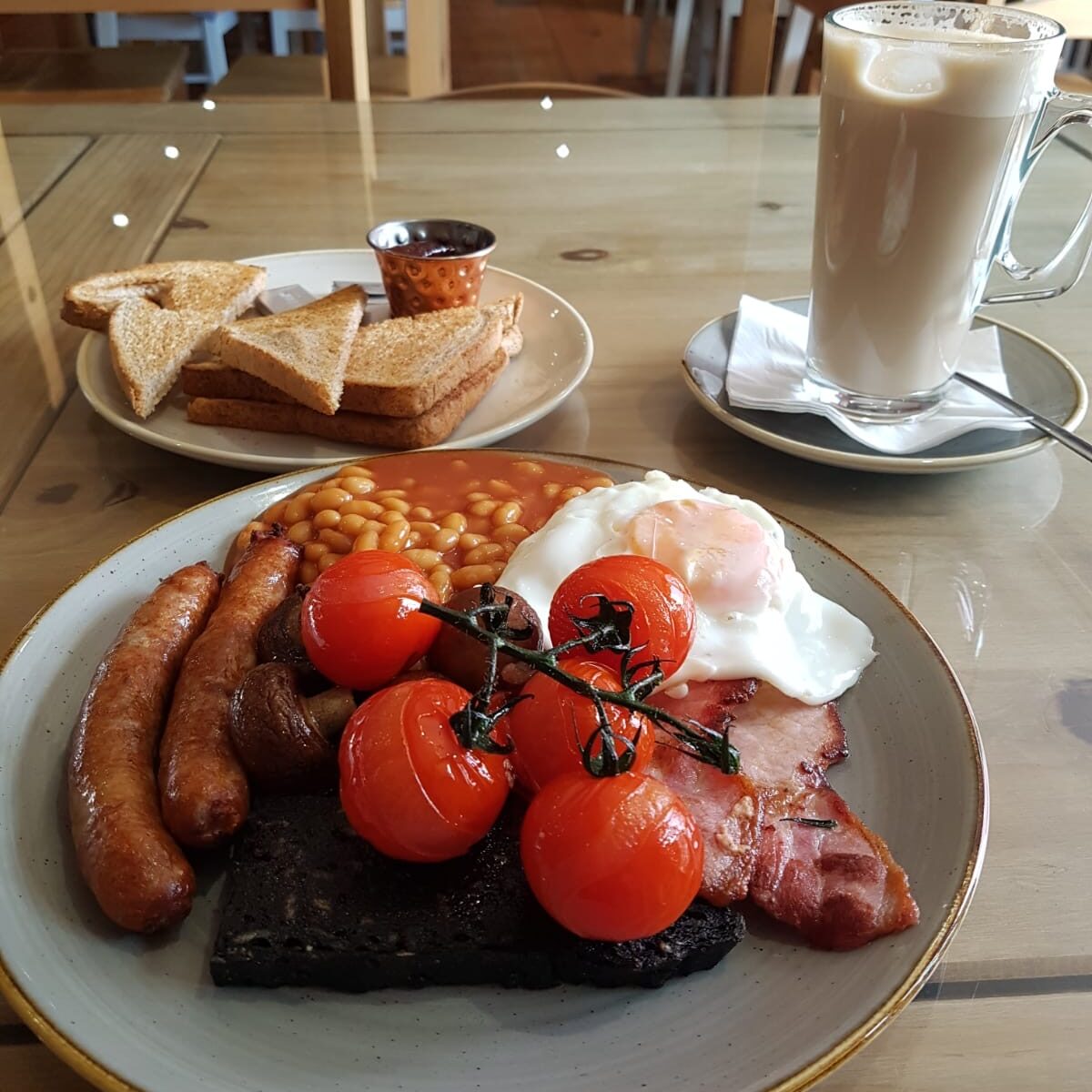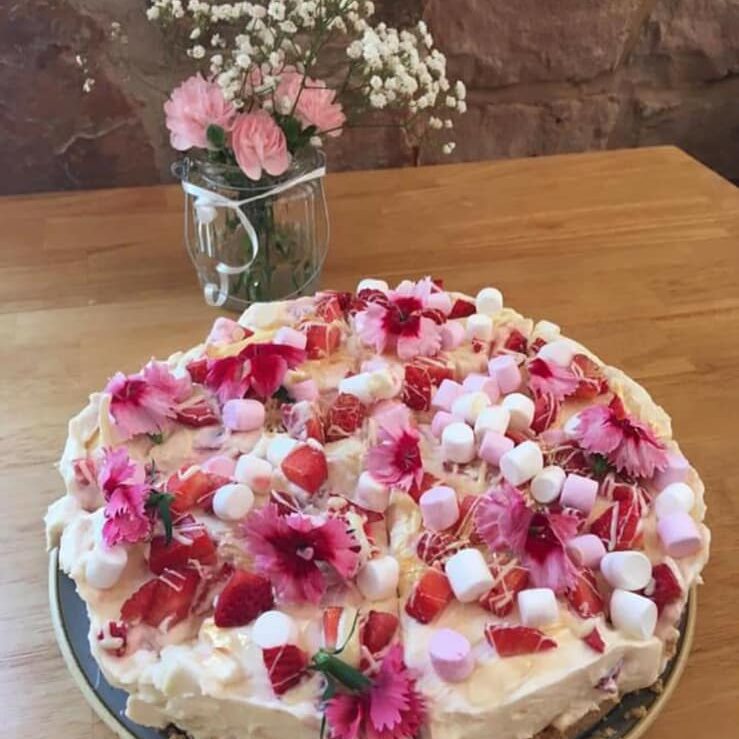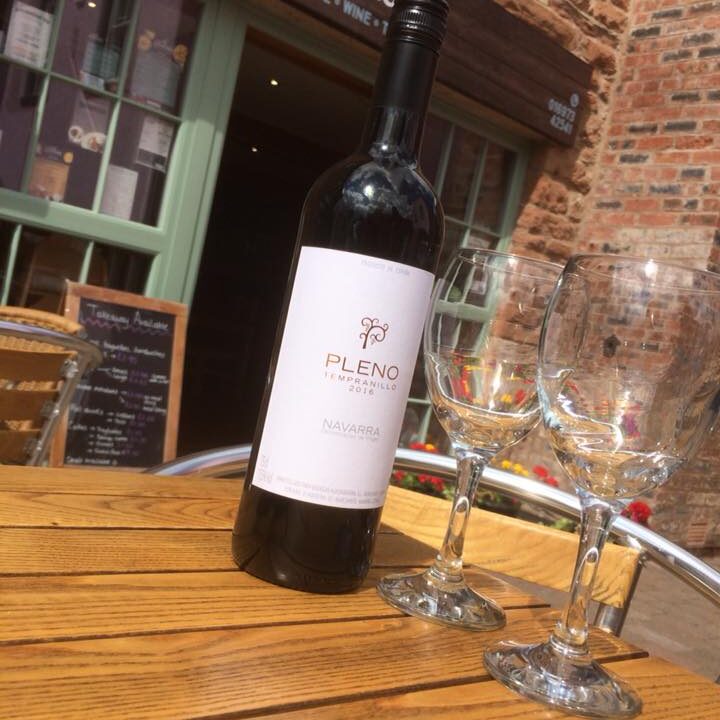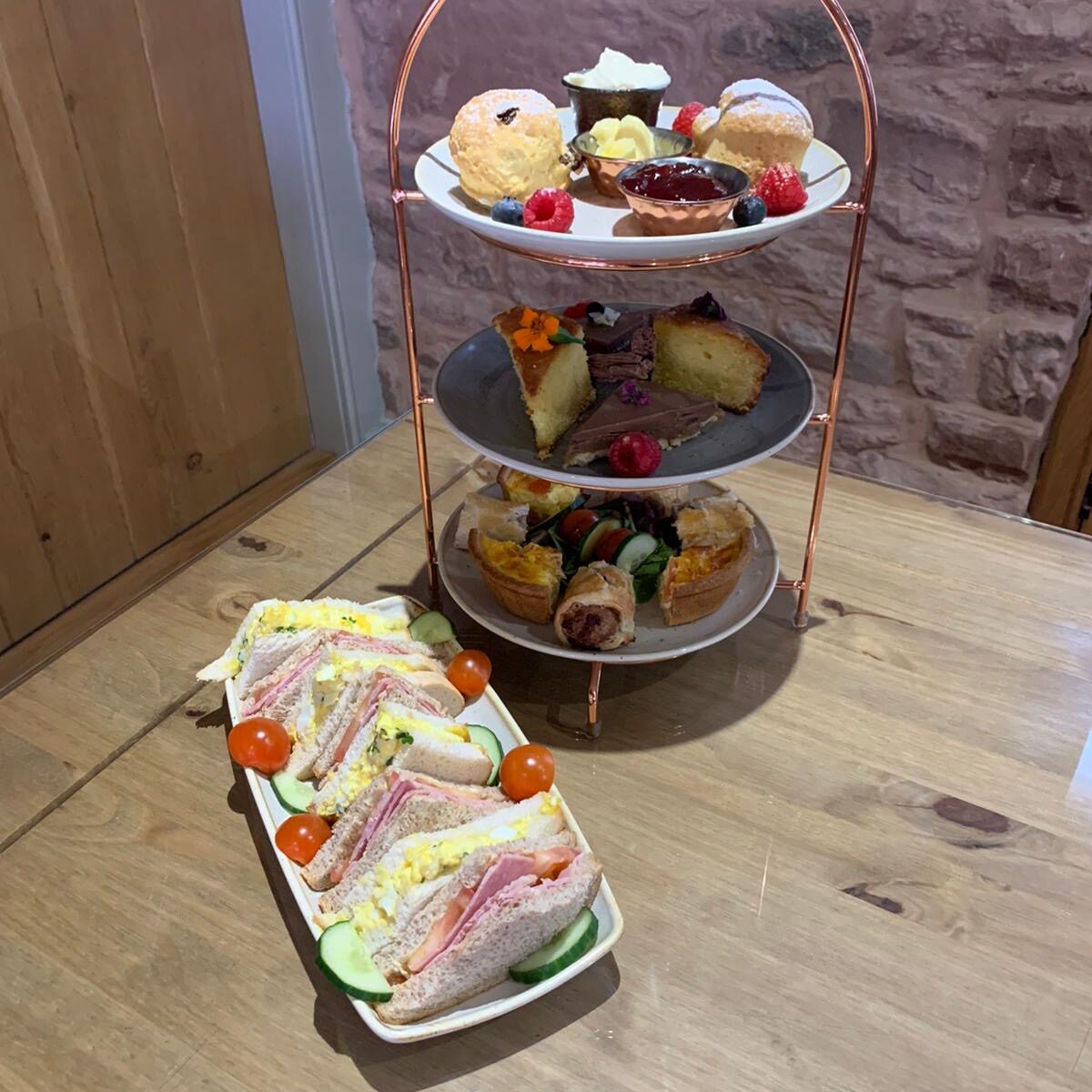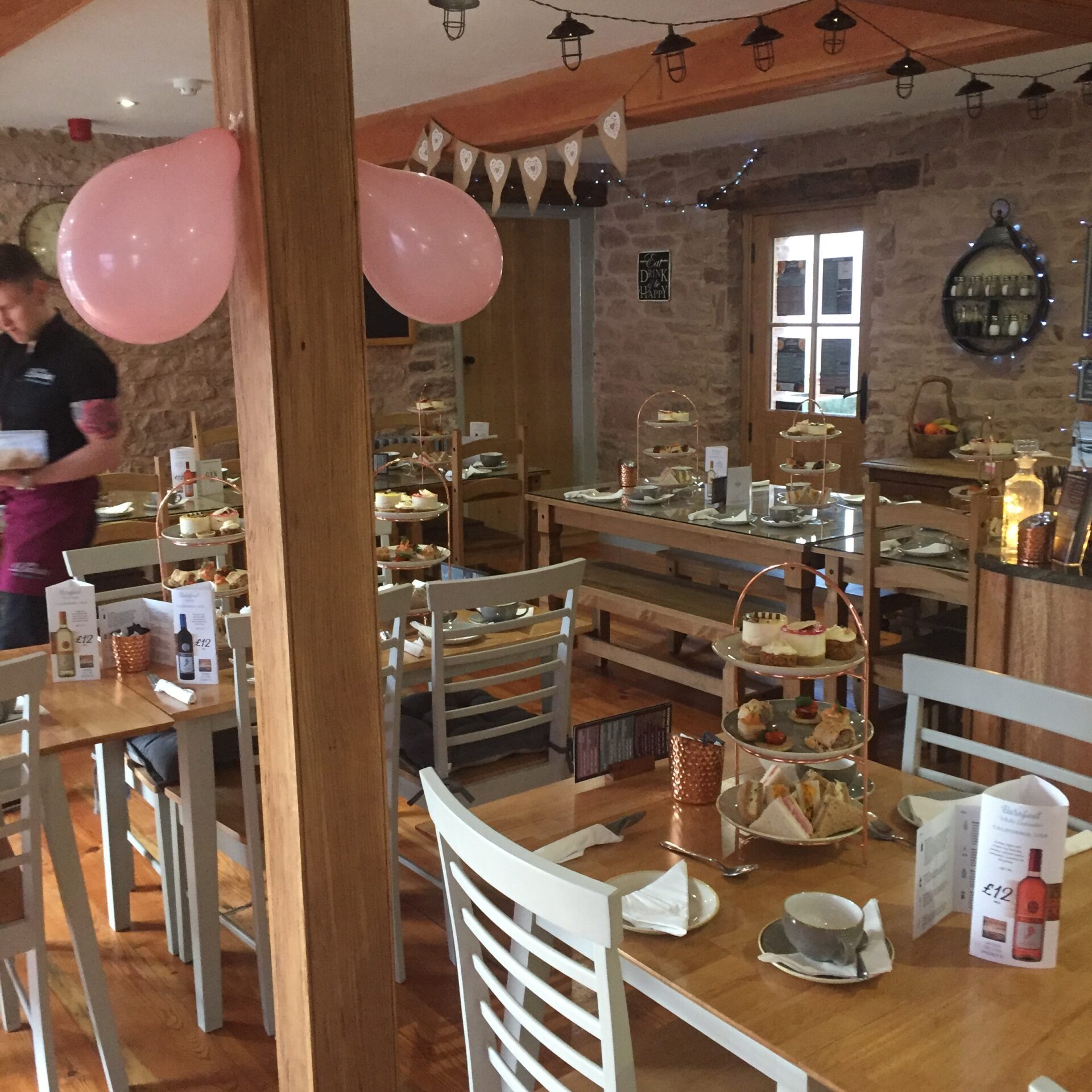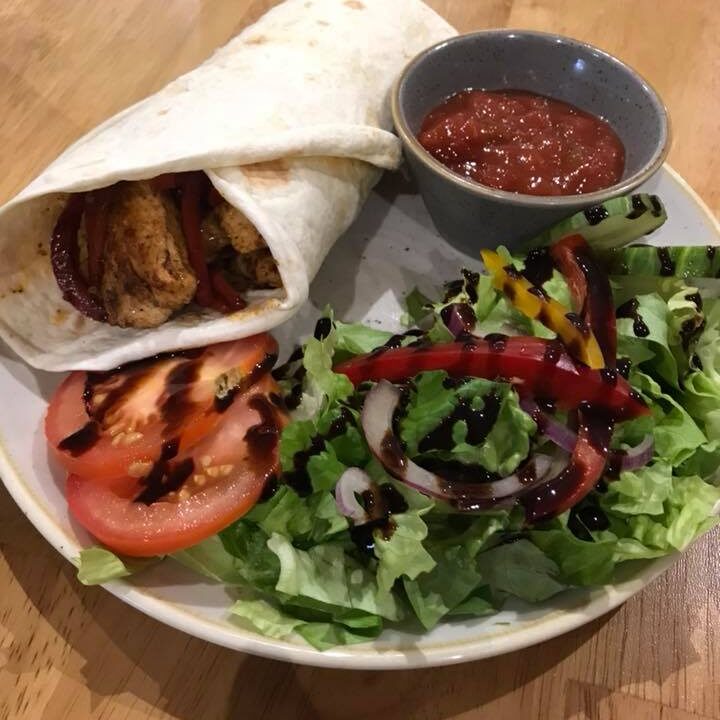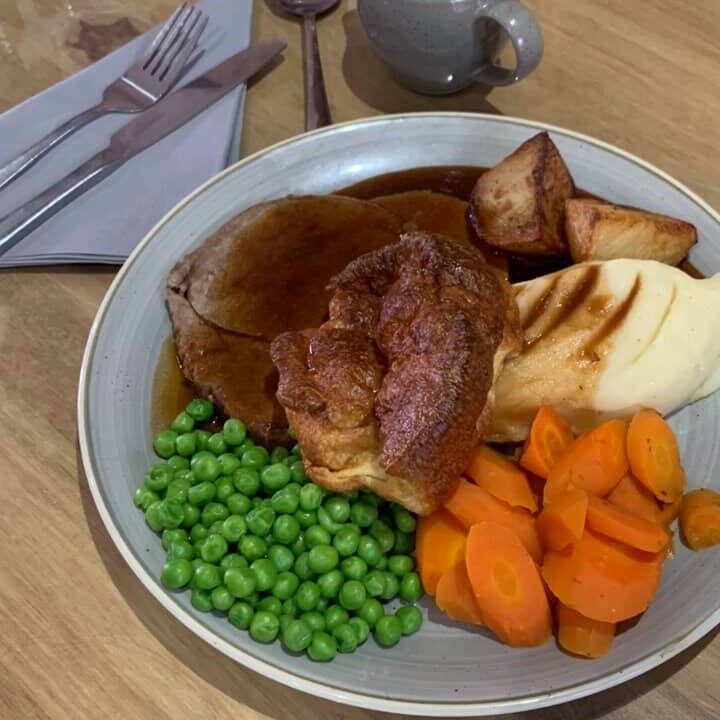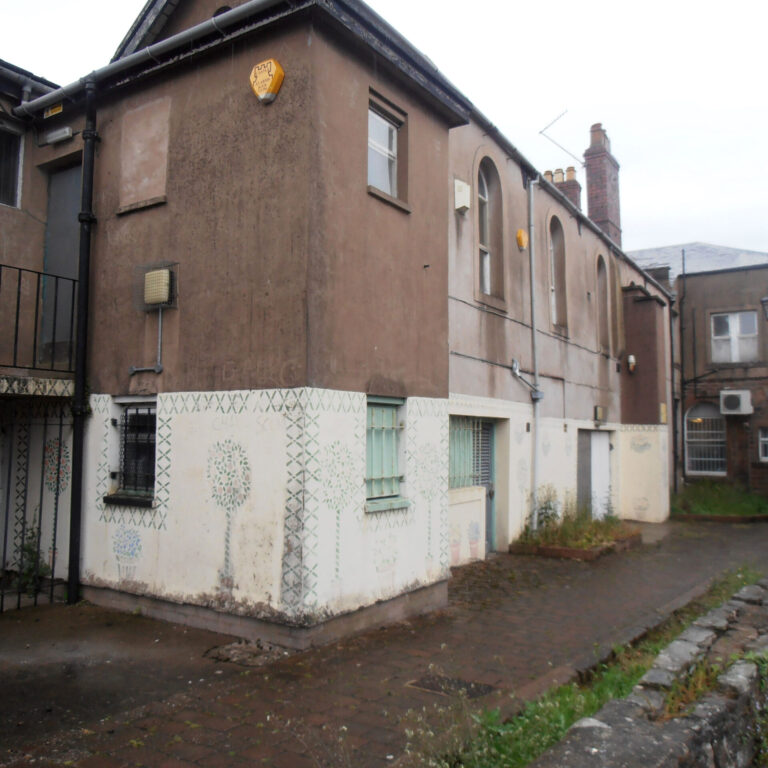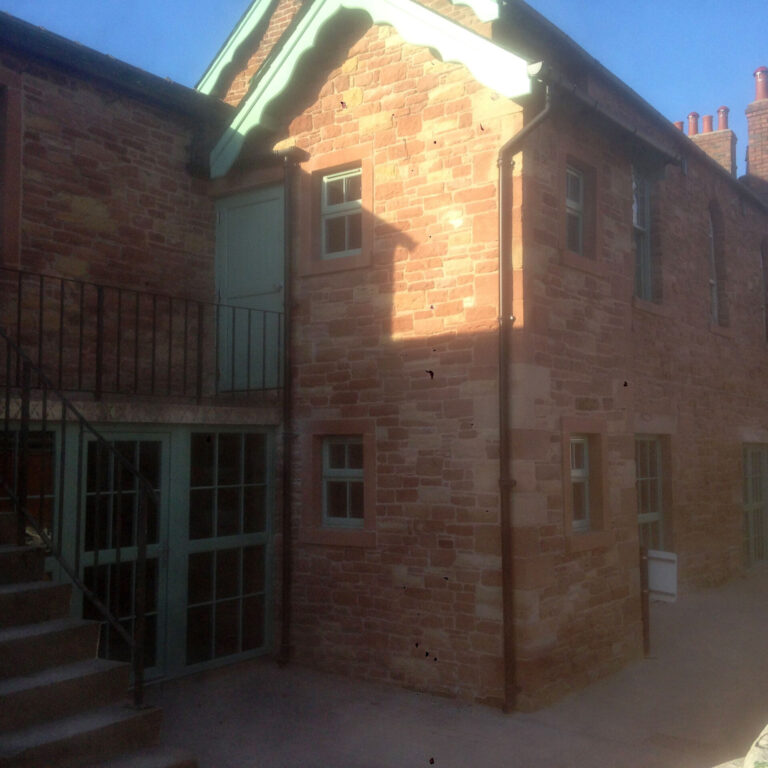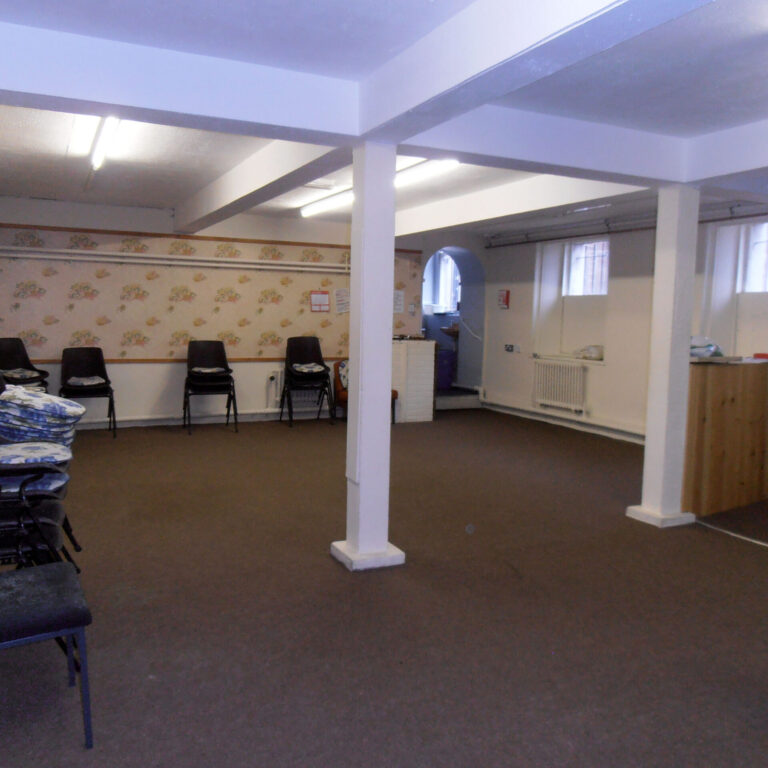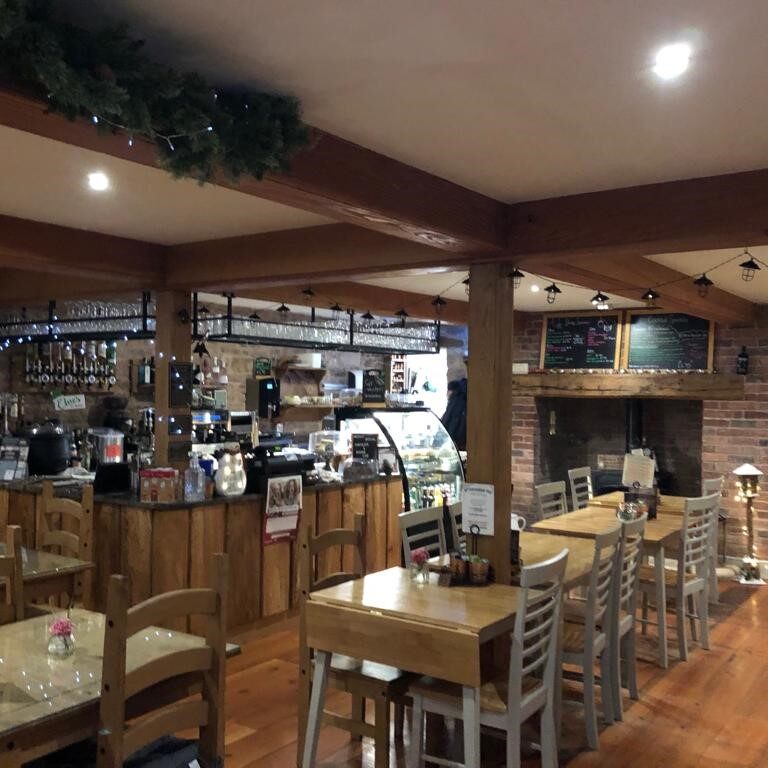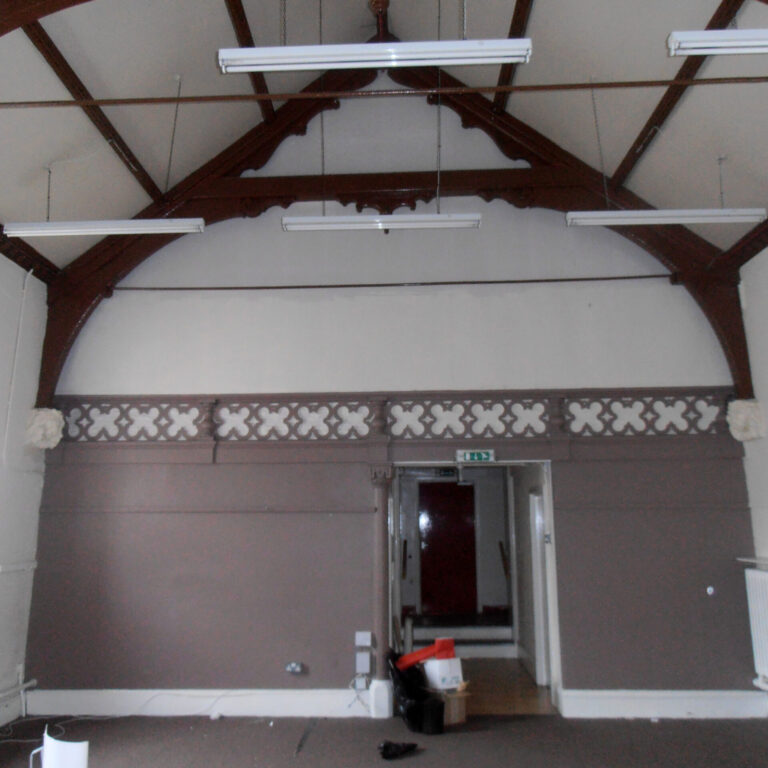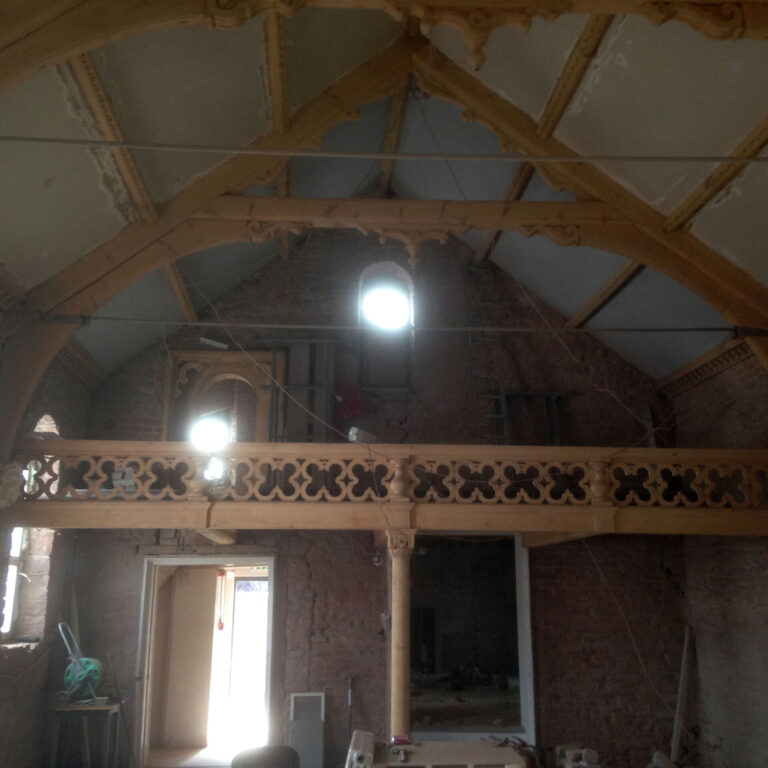Facilities
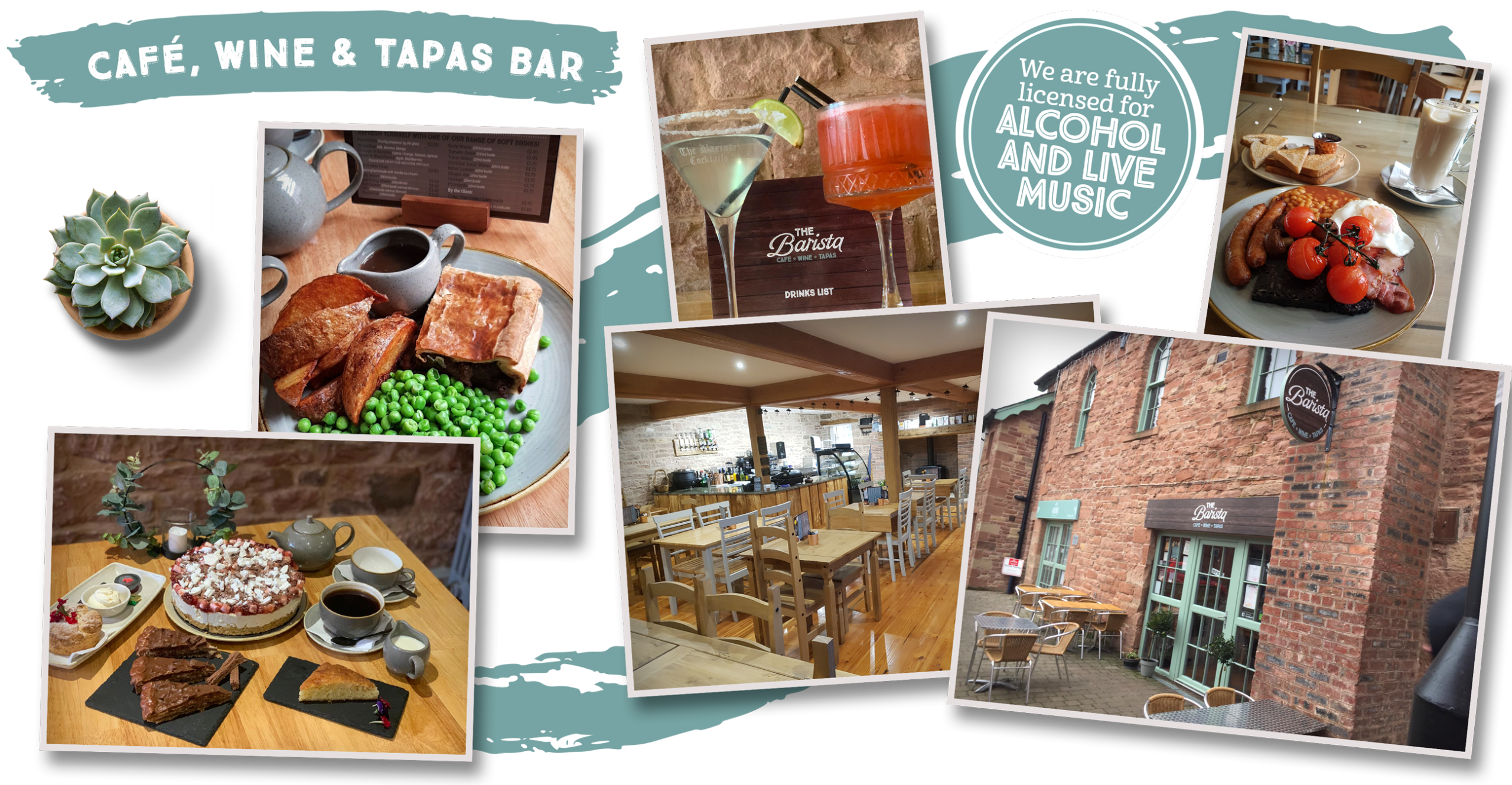
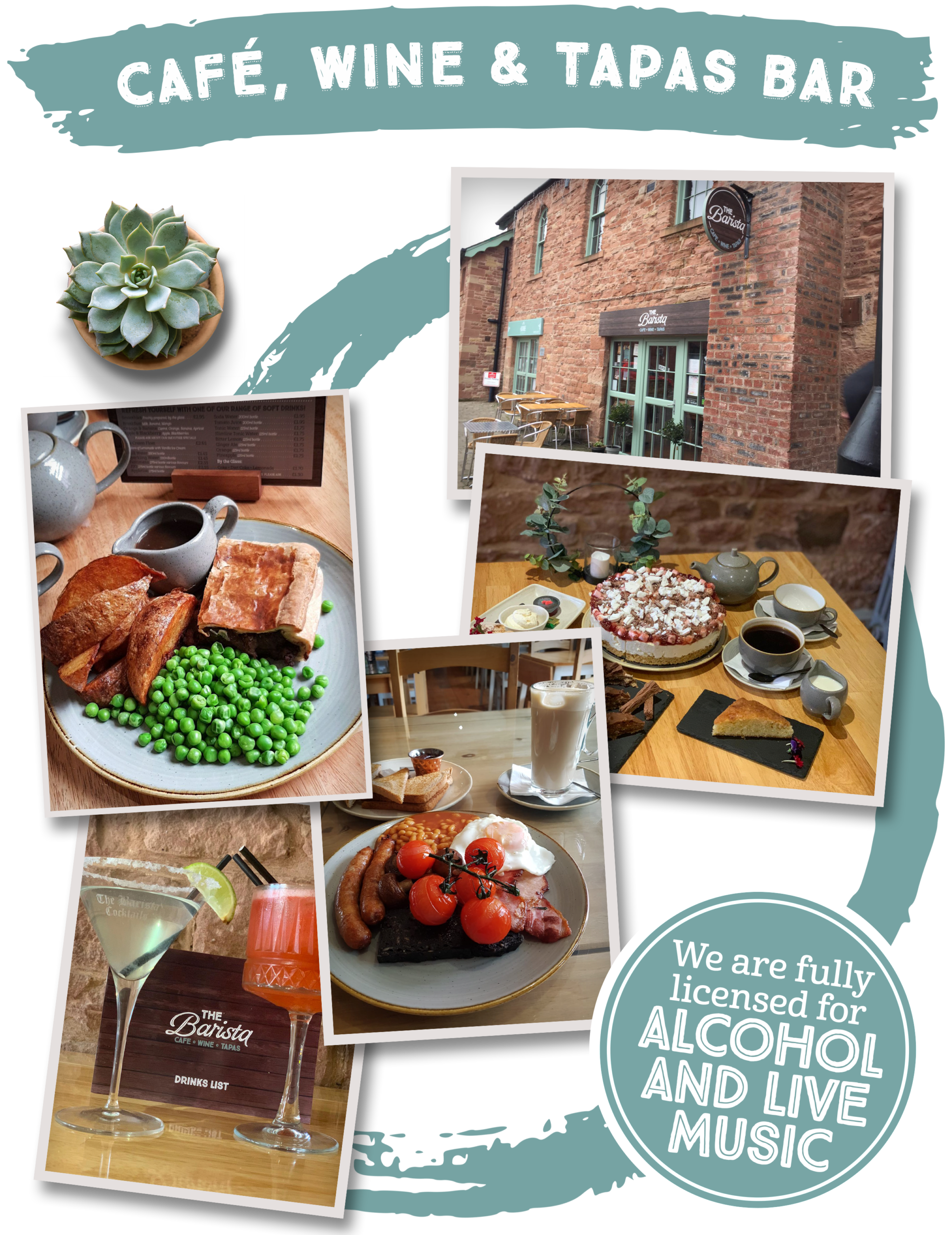
Café, Wine & Tapas Bar with Live Music & Entertainment
The Barista
Situated in the centre of the market town of Wigton in Cumbria, The Barista aim to offer top-quality food and drink with excellent waiter service, in a stylish, warm and welcoming environment.
Our fresh and exciting menus showcase our love for fine food no matter what time of day. All our food is prepared freshly each day from homemade breakfasts, cakes, pastries, tapas, light lunches to evening meals. We also provide a takeaway service with many gluten-free choices available.
The Barista has a fully licensed bar, offering a selection of wine, beer, spirits and cocktails as well as barista-made coffees, teas, and hot chocolate. Our entertainment license also allows us to regularly host live music, comedy nights and clairvoyant nights, as well as private functions and parties.
The Barista is baby and child friendly, with convenient changing facilities available.
Guests of all abilities and levels of mobility are very welcome as The Barista is very spacious and fully accessible by wheelchair, disabled toilet facilities are also provided.
What we offer
On the Menu
Explore the History of The Barista’s building…
Introduction
Our story so far, that has taken blood sweat and tears to get us where we are today!
We purchased the old community centre in 2014.
The property was one of Wigton’s most beautiful buildings but over the year’s had become an eye sore to the town centre and was being left to crumble with windows smashed and boarded up doors.
We took on the very large building which was originally a concert hall called the Athenaeum and then converted into a County Court. We are trying to reinstate any original features where it is possible as it is an historical building built in 1854 with a balcony and locally carved lion’s head’s which are just some of the original features we are restoring.
With the help of family, friends & local craftsmen we are trying to give the building its glory back to the community of Wigton to enjoy.
Both of us are local born and bred in the Wigton area so our passion is to renovate the building to a high standard.
We have made it accessible to disabled guests as well as it being baby and child-friendly, as it is important to us that everyone is able to access and benefit from our services. The enjoyment the community is now getting is rewarding to see as it is bringing people together to meet up or just to have a cuppa and read the daily paper.
We split the building into different areas to get full use out of the space:
- Adore Hair & Beauty – Opened 2016.
- The Barista Café / Wine / Tapas – Opened 2017.
- The Barista Lounge Bar – Opening soon.
- The Athenaeum Restaurant – Work still in progress.
- The Athenaeum Swan Lounge – Opening soon.
So far, we have created 18 permanent jobs within the businesses and hope to create more.
Hopefully our investment into Wigton town centre will encourage other locals to invest in this little market town.
Paul & Janice Evans
Below are a selection of photos showing the Before and After of our building:
Explore the History of The Barista’s building…
John Walker (1811 -1857)
John Walker, born in 1811, was the owner of the Black Lion Inn and was a builder and cabinet maker. In the 1841 census, he is shown as a joiner, aged 30, living in West Street. In Slater’s Directory of 1848, he is described as a timber merchant and dealer. In the 1851 census, John Walker is described as a master joiner employing 20 men. He still lived in West Street and had two servants and two lodgers, one of whom was described as a ‘journeyman joiner’. A press cutting of March 1853 refers to John Walker as the builder of the Athenaeum. In 1857, John Walker was advertising for sale Welsh slates, drains and salt. He died in 1857 and his property and woodwork equipment were sold in 1858.
Irving Ray
Irving Ray was a sculptor operating in the Wigton area. He and his family were well known for carvings in stone and wood so they may have helped with the carvings of the six different Lions heads in the Athenaeum. Irving Ray did the carving on The Mechanics Institute, now the British Legion.
Athenaeum (20 High Street First Floor)
The name ‘Athenaeum’ came from the Greek goddess of wisdom, Athene.
1824 – Athenaeum private gentlemen’s club, was built in London.
Maryport and Carlisle built Athenaeums in the mid-19th century so it was clearly fashionable.
1845 – Maryport to Carlisle railways completed which opened up travel for local residents to London
1850 – Mr John Walker, a builder and carpenter, bought the Black Lion and associated buildings about 1850 and then built the Athenaeum circa 1852 as a place of entertainment and education, with a newsroom and library. This use continued until his death in 1857 when the inn was sold and the property bought by the Government for conversion to a County Court.
1852 – The Athenaeum was built circa 1852 and the earliest reference to it is in March 1853 when a dinner was held there after the Great Northern Ploughing Match which took place on land at Dockray Hall. Until 1859, the primary use was for entertainment. There are several press reports of activities at the Athenaeum and these indicate that it was used for meetings, dinners, concerts, balls and auctions. (See Illustrations 6.15 to 6.20)
1851 – The 1851 census shows a solicitor in Wigton called Joseph Carrick aged 31. The Carlisle Journal of 26 January 1855 includes an advert by Carrick solicitors for ‘money to lend on real property at a reasonable rate of interest’. The 1871 census refers to ‘Mr Carrick’s Lane’.
1858 – In January 1858, the Carlisle Journal states that ‘Wigton County Court was held in the Athenaeum which building the government is about to purchase for the purpose of holding the courts in’. On that day, there were 129 cases awaiting trial as court had not been held for some time.
1881 – The 1881 census shows Joseph Carrick, aged 61, solicitor, living with his wife Fanny and three children at Floshfield House, Wigton. His son William John Carrick is shown as a solicitor aged 30. The Carlisle Archive Centre has a letter, dated 1895, showing Carrick and Dudding at the County Court Buildings. (See Illustration 6.13) Kelly’s Directory for 1906 includes details of Carrick and Dudding, Solicitors and Commissioners for Oaths and Registrars to the County Court, based in the County Court Buildings, High Street. They appear again as 19 Carrick, Dudding & Dudding in 1934 and 1938 and in addition to the above duties, they were insurance agents and clerk to the governors of Nelson Thomlinson School. In 1934, Henry Thomas Dudding was the Registrar and Arthur Norman Dudding was the Deputy Registrar. They occupied the County Court Buildings until 1962 and then are no longer shown at this address.
1907 – The Police Committee requested that the County Property Committee purchase premises at the corner of New Street and Station Road for a new Court House and Police Station ‘as the present Court House and Police Station at Wigton were unsuitable’. As a result, a new Police Station and Magistrates Court opened in New Street in 1908. The functions of the two courts were different. Use of the County Court Buildings for the County Court continued until at least 1929, as this is recorded in Kelly’s Directory of 1929. Also, the use of the premises as a solicitors’ practice continued. The Phone Book for 1962 records Carrick, Dudding & Dudding, Solicitors, at County Court Buildings with a phone number of Wigton 251.
1925 – The deeds of 20 High Street show a conveyance from Charles John Tiffen and Joseph Studholme Tiffen to Edmund Michael Dolan in 1925. Joseph was 65 at the time of this conveyance.
The premises on the ground floor previously used as the Solicitors offices were later used briefly as the post sorting room before being used as a drop in centre for the elderly and now converted into the Barista Café.
The stables for the Athenaeum were at the rear of the ground floor which have now been converted into Adore Hair & Beauty Salon.
1960 – The first floor Athenaeum became Wigton Community Hall about 1960. Shortly after this it was renamed as the High Street Centre, all part of a new image.
1972-73 – TSB Bank moved from across the road into the ground floor
1970 – Athenaeum post office
Black Lion Inn – 20 High Street (In front of the Athenaeum)
1811 – The Black Lion Inn was recorded as having Joseph Moore as the Inn Keeper
1851 – The Black Lion Inn was sold at Auction with commodious stabling, outhouses, yard and conveniences. Also for sale were ’four freehold messuages or dwelling house, currier’s shop and premises joining the Inn, and all that plot of garden ground adjoining the Black Lion Yard’. It was reported that a pork market was held weekly in the yard of the Black Lion. Mr Joseph Carrick was the solicitor dealing with the sale.
1858 – The Black Lion was sold again under the will of Mr John Walker on his death and the sale notice described it as ‘an old fashioned inn, communicating with a public room called the Athenaeum, a new and tastefully furnished building in which is held the County Court and most of the public lectures, balls and concerts in town. There are also convenient stables, yards, warehouse and several dwellings and gardens adjoining the premises’. (See Illustration 6.10) The Black Lion was demolished shortly after this.
After the Black Lion was demolished, it was replaced with a building that would have been designed to provide administrative premises for the County Court. The judge and the registrar would have needed space and would have used the offices upstairs. The downstairs of the premise was also used as the solicitors’ practice Carrick, Dudding & Dudding, Solicitors.
The design detail of the downstairs windows of the TSB building is similar to the windows on the southern elevation of the Athenaeum, which suggests it was constructed at about the same time.
The building has two storeys with a sandstone façade. The façade is similar in appearance to the banks elsewhere in town, indicating that it was intended to be a prestigious building, although it is simpler in design which is consistent with it being a building that was publicly funded. It has two front doors, one of which leads to a wide staircase giving access to the upper floor and Athenaeum. This latter door has Carrick & Son inscribed on the door jamb.
The OS map of 1867 has an interesting floorplan which appears to show a passage at the southern end of the building. The window openings correspond with those that are present now.
The Limes Surgery – 18 High Street
The Limes is adjacent to the Athenaeum and the history of the two properties is closely related. It is now a Grade II Listed building. A Valuation Office Survey of 1910 shows the property as including a ‘dwelling house, surgery, stable, coach house, wash house, outhouses, greenhouse and garden’. The house itself is described as having ‘3 cellars, vest, hall, consulting room (bay window), breakfast room, kitchen, surgery, second consulting room, 2 stores over, 1st floor drawing room, 3 bedrooms, lavatory WC Top floor 4 bedrooms, bathroom, slate roof, cobbled yard, 3 stalls, stable, saddle room, lofted carriage house, washhouse, ashes’. A floor plan of the building was included.
1841 – The 1841 census shows Mr Joseph Studholme as a solicitor in High Street, Wigton, aged 51, living with Francis aged 20, Mary aged 15, Ann aged 13 and two servants. Slater’s Directory of 1848 refers to J Studholme, High Street, attorney and clerk to the magistrates. In the Carlisle Record Office is a document dated 1850 about Studholme & Tiffen, Solicitors, Wigton. In 1856, Joseph Studholme decided to move from the High Street to the country and let his house.
1861 – The 1861 census shows Dr Robert Tiffen, aged 37, living in the High Street with his wife Ann, aged 33, daughter Mary Elizabeth aged 5, son Charles John aged 2 and son Joseph Studholme Tiffen. His wife Ann was the daughter of Joseph Studholme above. The 1871 census describes Robert as having trained at St Andrews University, being a member of the Royal College of Surgeons and with other qualifications including obstetrics. He lived in the High Street with his wife Ann, son Joseph Studholme Tiffen aged 11, a cook, a housemaid and a groom. They were next to another property shown as Dr Tiffen’s yard, occupied by Alice Brown.
1871 – The 1871 census shows Joseph Studholme Tiffen still living in the High Street with his mother and father, three servants but no siblings. Charles John had been sent away to a prep school at Kingston (upon Hull?). By the 1881 census, Charles was a medical student at Edinburgh. The deeds indicate that, by 1890, Charles John Tiffen and Joseph Studholme Tiffen were the owners of The Limes.
The 1901 census shows Joseph S Tiffen, aged 41, born in Wigton. The Berwickshire News and General Advertiser 02 July 1901 refers to Mr J Studholme Tiffen, a solicitor
1910 – The 1910 Valuation Office Survey records show C J Tiffen of 67 Vicarage Road, Eastbourne as the owner of The Limes. The property was occupied by Dr John Browne and is described in three parcels. (See Illustration 6.5) By 1911, Charles John is shown as a retired doctor living in Eastbourne.
1906 – Kelly’s Directory of 1906 includes details of a John James Brown who lived at the Limes and was a Certifying Factory Surgeon. Kelly’s Directory of 1934 shows that this role was now taken by ‘Edmund Michael Dolan MRCS ENG LRCP London’ who lived at The Limes. He was also described as a physician & surgeon, medical officer to the Institution, and medical officer to the Oddfellows, Foresters and Rechabites Societies. Also living at The Limes was ‘Thomas Michael Dolan LRCP LRCS Edin LRFP SGlas’, physician and surgeon.
In July 1953, there was a deed of grant between Thomas Michael Dolan and the Minister of Works for the installation of two windows in the Athenaeum overlooking The Limes. Attached to the deed is a plan that shows that The Minister of Works owned the TSB building and the Athenaeum, whilst the Dolans owned all the property running from the High Street to the house at The Limes and beyond. Edmund Michael Dolan of Rivenia, Micklethwaite, near Wigton died in July 1953 and probate was granted to Martins Bank Ltd and Stephen Ormond Dolan, Colonel in the British Army
We have shown that there was a close relationship with the Limes, the home of doctors and solicitors, mostly from the Studholme and Tiffen families, but also others. Joseph Studholme was the first Registrar to the County Court and he had a solicitor’s office to the rear of The Limes. He had a practice called Studholme and Tiffen and this continued until John Tiffen died about 1856. By this time, Joseph Studholme was aged 66 and wanting to move to the country.
Meanwhile, Dr Robert Tiffen had married Joseph’s daughter and they had two sons, born in 1858 and 1860. By 1858, when the Black Lion was sold to the Government, Robert Tiffen appears to have acquired John Tiffen’s property at The Limes. He would have wanted a good house for his expanding family and also a doctor’s surgery nearby, so had the motivation to negotiate a move of the bank and solicitor’s office out of The Limes and into the site of the Black Lion.
The Government needed premises for the administration of the Court and combining this with a solicitor’s office may have worked well. It is not entirely clear who occupied the downstairs of the TSB building from 1860 onwards, but it seems likely that it was a bank or insurance agent, closely linked with the solicitors. This use then continued largely unchanged for about a hundred years. Studholme, Carrick and Dudding were all Registrars at some time. Carrick and Dudding continued to practice as solicitors in the upstairs of the TSB building until 1962.
The two sons of Robert Tiffen became a solicitor and a doctor and both moved away from Wigton but still owned property until 1925. After 1925, the Dolans brothers, who were both doctors, came to live at The Limes, which still had a doctor’s surgery. They applied to build a new surgery on land of the County Court Cottages and these changes took place in the 1960s
Private Functions & Parties
We cater for all occasions...
★ PRIVATE FUNCTIONS
★ CHRISTENINGS
★ Funerals
★ Baby Showers
★ Mini Weddings
★ Business Meetings
★ Birthday Parties
★ LEAVING PARTIES
★ ANNIVERSARIES
★ Hen Party Nights
★ Christmas Parties
★ Engagement Parties
Our venue can cater for gatherings of up to 40 people inside, with outside seating available if extra chairs are needed (weather depending).
If you’re looking to expand the venue and wanted to be outside then we have a mini-marquee, which is available for hire (weather depending on the day).
If you require some extra items, we also hire out our candy cart (sweets not provided), fresh or artificial flowers, helium balloons and chair covers can be purchased from us or sourced locally.
For dining options, you can have the choice of one of our 3 buffet menus or choose a meal from our main menu.
Our venue also has a late license for all parties and private functions.
Booking Information
If your require any more information, then please don’t hesitate to call us on 016973 42541 and we will be more than happy to help.
For larger bookings, functions and live music, a deposit or full payment may be required. Pre-orders must be given with at least 3 days notice, cancellations without 72 hours notice on larger bookings will lose the deposit.
Gift Vouchers also Available
Gift Vouchers also Available
